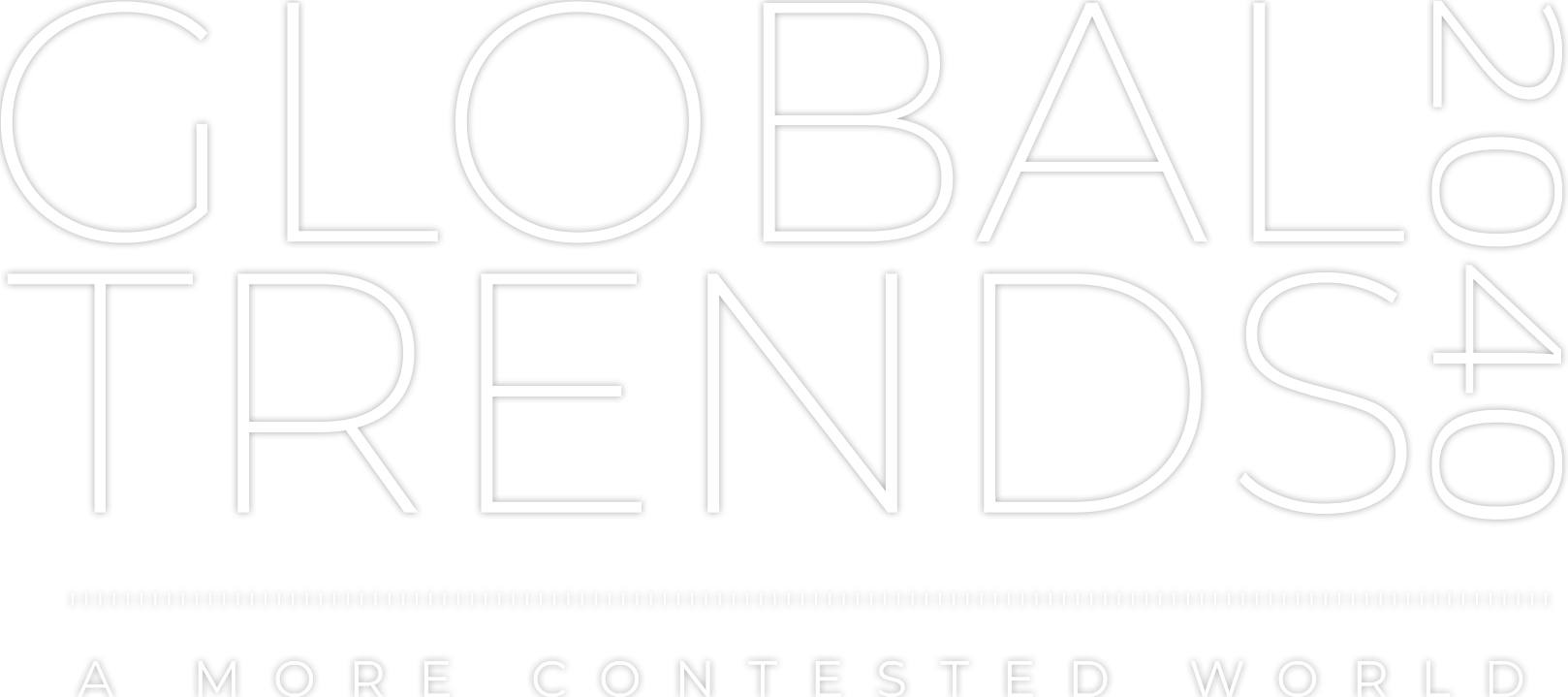EMERGING DYNAMICS
SOCIETAL, STATE, AND INTERNATIONAL 
While these demographic, environmental, economic, and technological trends are setting the stage, the story of the next 20 years will be written primarily by the choices made at societal, state, and international levels. Emerging dynamics at all levels point to greater debate and contestation. Personal and policy choices will determine the cohesiveness of societies, the resilience of states in all regions, and the types of interactions between states.
In many countries, people are pessimistic about the future and growing more distrustful of leaders and institutions that they see as unable or unwilling to deal with disruptive economic, technological, and demographic trends. In response, people are gravitating to familiar and like-minded groups for community and security, including ethnic, religious, and cultural identities as well as groupings around interests and causes. Communities are more fragmented and in conflict; a cacophony of competing visions, goals, and beliefs are placing greater demands on governments.
At the same time, governments are struggling under mounting pressures and tighter resources, and they are finding it difficult to meet the challenges of a globally interconnected, technologically advanced, and diverse world. The result is a growing disequilibrium between public demands and governments’ ability to deliver welfare and security, portending greater political volatility and increasing risks for democracy. Unmet needs and expectations are encouraging a flourishing marketplace of additional actors providing governance, security, and services, including nongovernmental organizations, churches, corporations, and even criminal organizations. States that adapt to the mounting governance challenges probably will be better positioned to rebuild trust and legitimacy.
During the next two decades, power in the international system will evolve to include a broader set of sources and features with expanding technological, network, and information power complementing more traditional military and economic power. The rivalry between the United States and China is likely to set the broad parameters for the geopolitical environment during the coming decades, forcing starker choices on other actors. States will leverage these diverse sources of power to jockey over global norms, rules, and institutions, with regional powers and nonstate actors exerting more influence within individual regions and leading on issues left unattended by the major powers. The increased competition over international rules and norms, together with untested technological military advancements, is likely to undermine global multilateralism, broaden the mismatch between transnational challenges and institutional arrangements to tackle them, and increase the risk of conflict.


